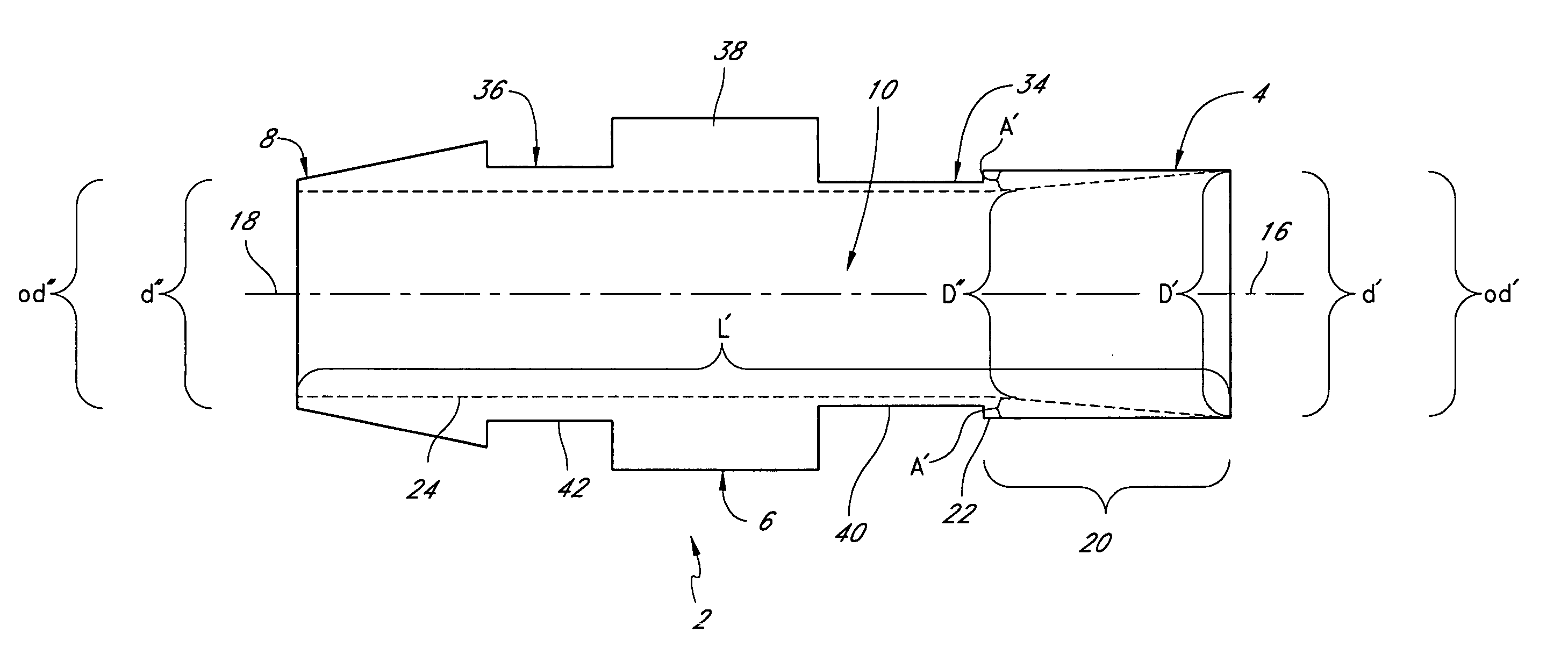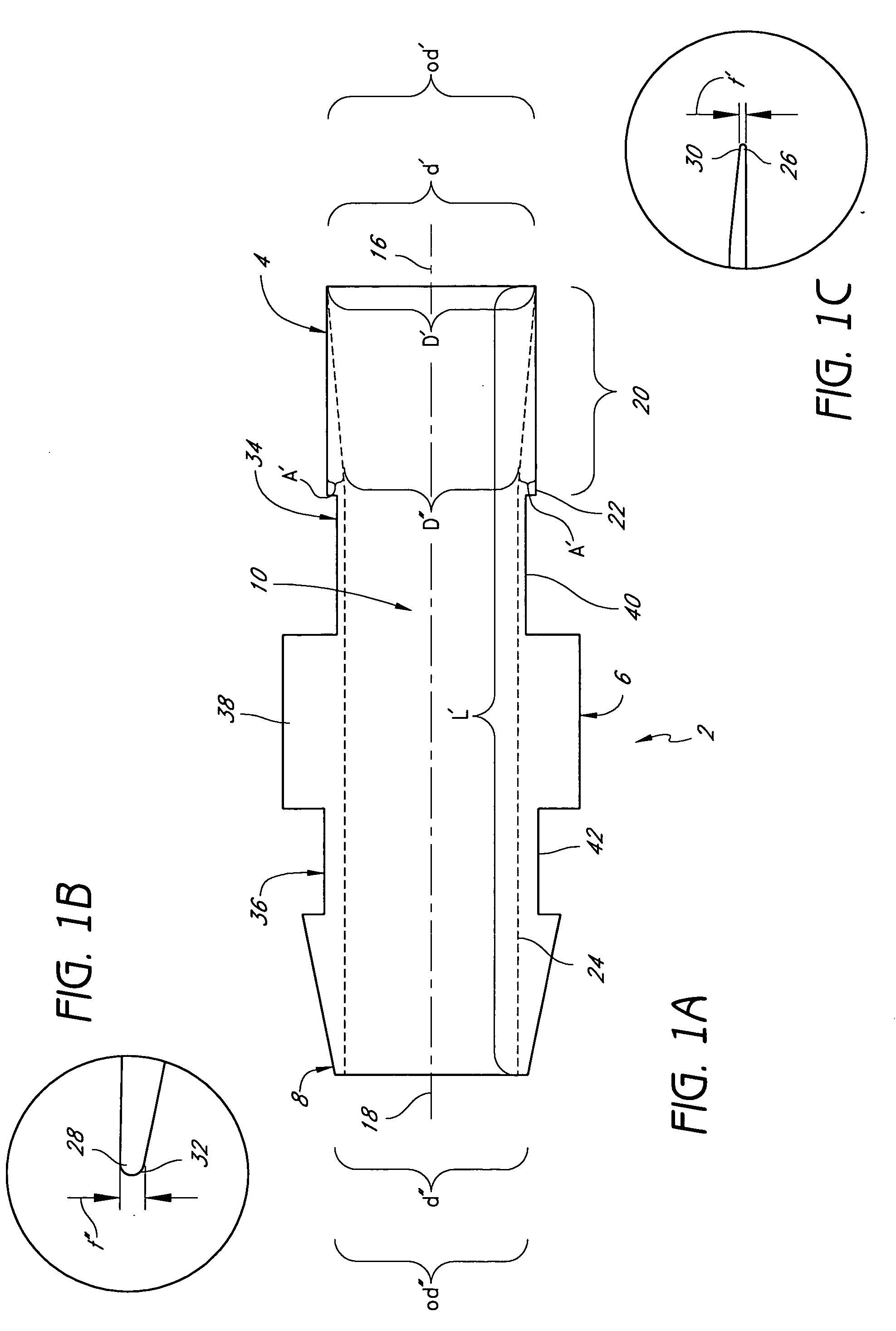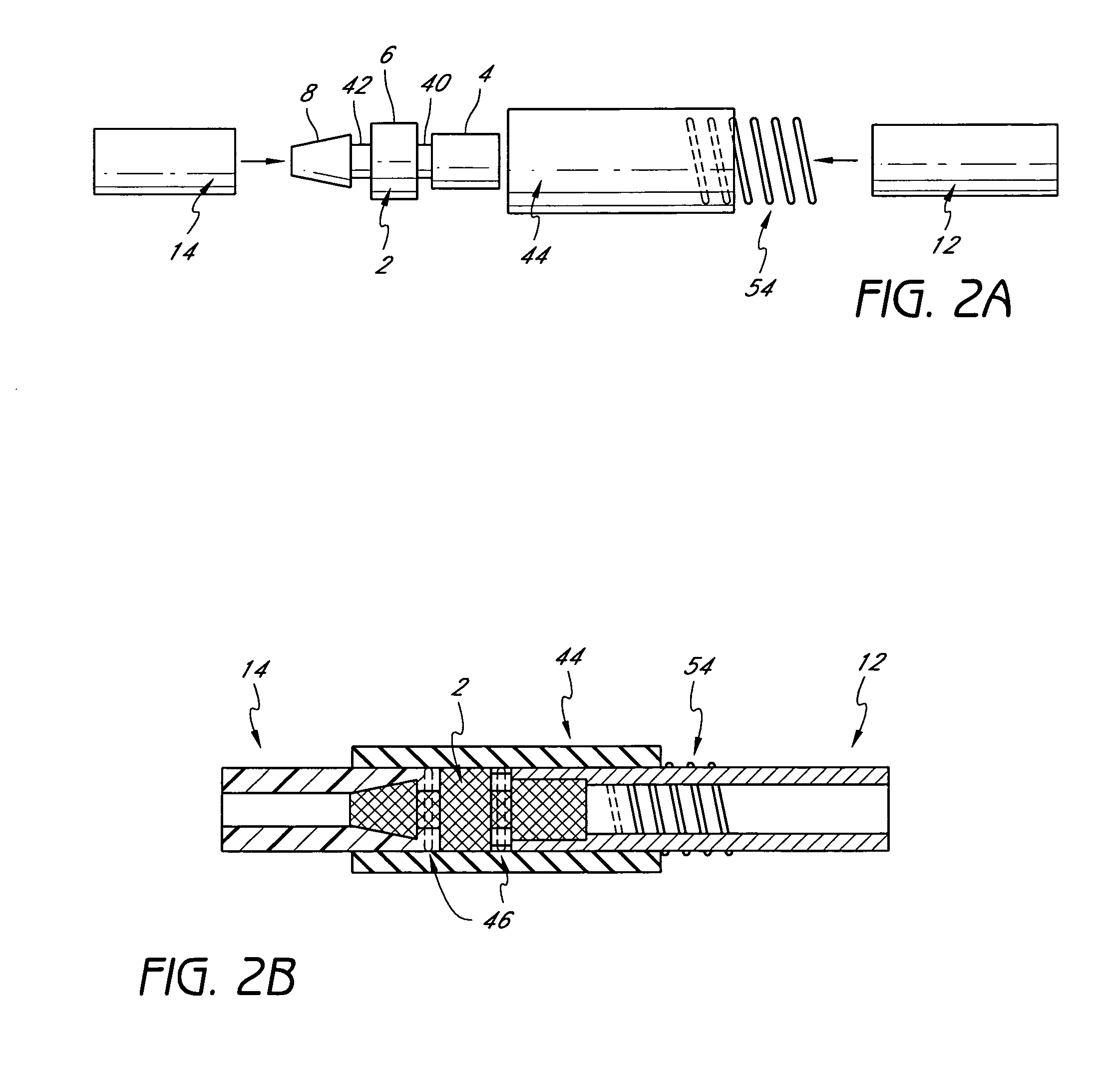Device and method for vascular access
a vascular access and device technology, applied in the field of devices and methods for vascular access, can solve the problems of increased patient risk of bleeding and infection, discomfort, and inability to direct anastomosis in all patients, and achieve the effect of increasing reducing the net blood flow ra
- Summary
- Abstract
- Description
- Claims
- Application Information
AI Technical Summary
Benefits of technology
Problems solved by technology
Method used
Image
Examples
Embodiment Construction
[0061] Research indicates that graft failures from localized stenosis at the venous end of AV grafts are primarily due to intimal hyperplasia, compliance mismatch between the graft and the native vein anastomosis, and turbulent flow at the anastomosis site. Kanterman R. Y. et al “Dialysis access grafts: Anatomic location of venous stenosis and results of angioplasty.” Radiology 195: 135-139, 1995. We hypothesize that these causes could be circumvented by eliminating the venous anastomosis and instead, using a catheter to discharge the blood directly into the venous system. We have developed vascular access system that eliminates the venous anastomosis in the AV shunt, using a catheter element at the venous end and a synthetic graft element anastomosed to the artery in the standard fashion. We believe that such system should eliminate or reduce venous hyperplasia, which is the largest reason for AV shunt failure.
[0062] Although these devices may be may be ...
PUM
 Login to View More
Login to View More Abstract
Description
Claims
Application Information
 Login to View More
Login to View More - R&D
- Intellectual Property
- Life Sciences
- Materials
- Tech Scout
- Unparalleled Data Quality
- Higher Quality Content
- 60% Fewer Hallucinations
Browse by: Latest US Patents, China's latest patents, Technical Efficacy Thesaurus, Application Domain, Technology Topic, Popular Technical Reports.
© 2025 PatSnap. All rights reserved.Legal|Privacy policy|Modern Slavery Act Transparency Statement|Sitemap|About US| Contact US: help@patsnap.com



